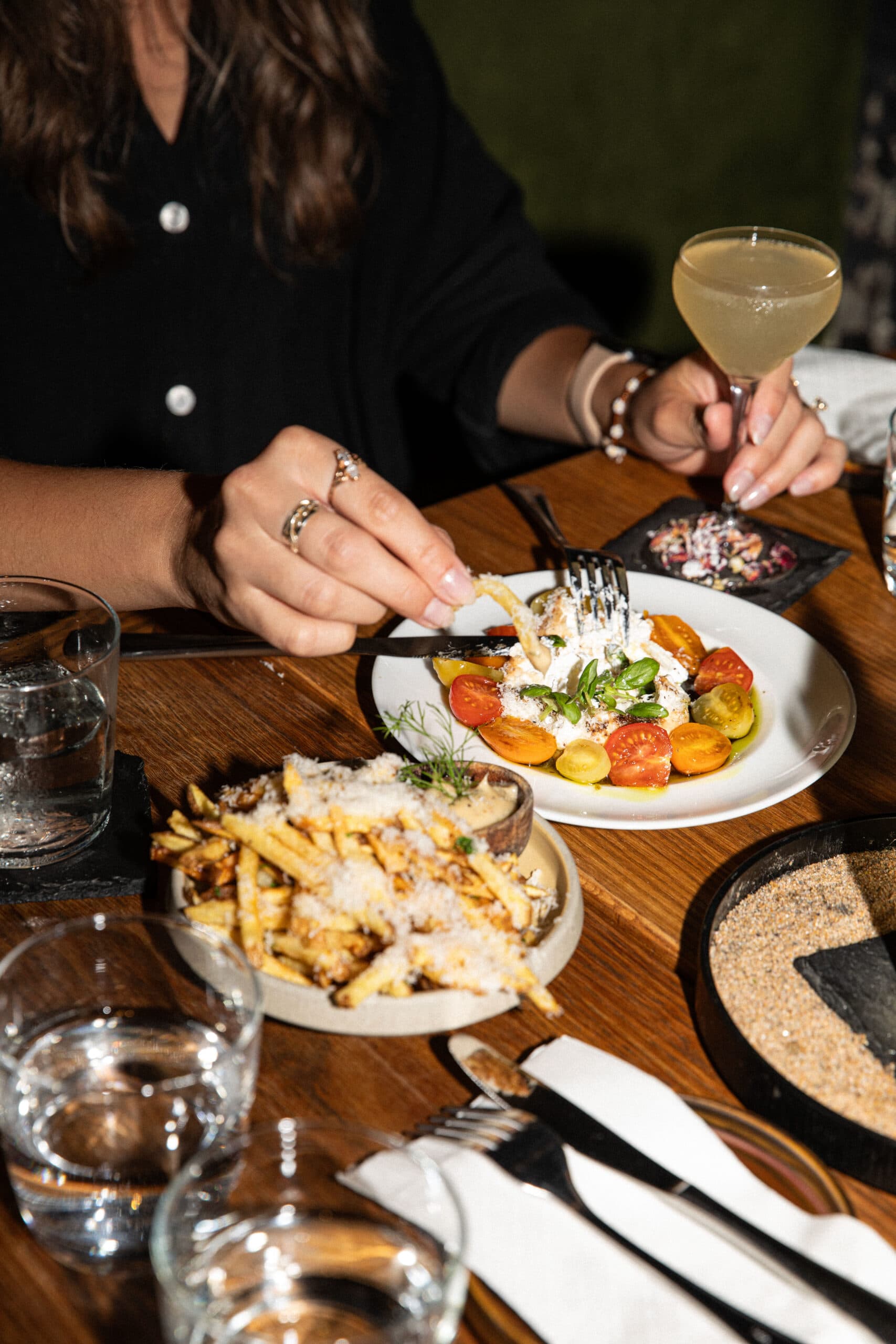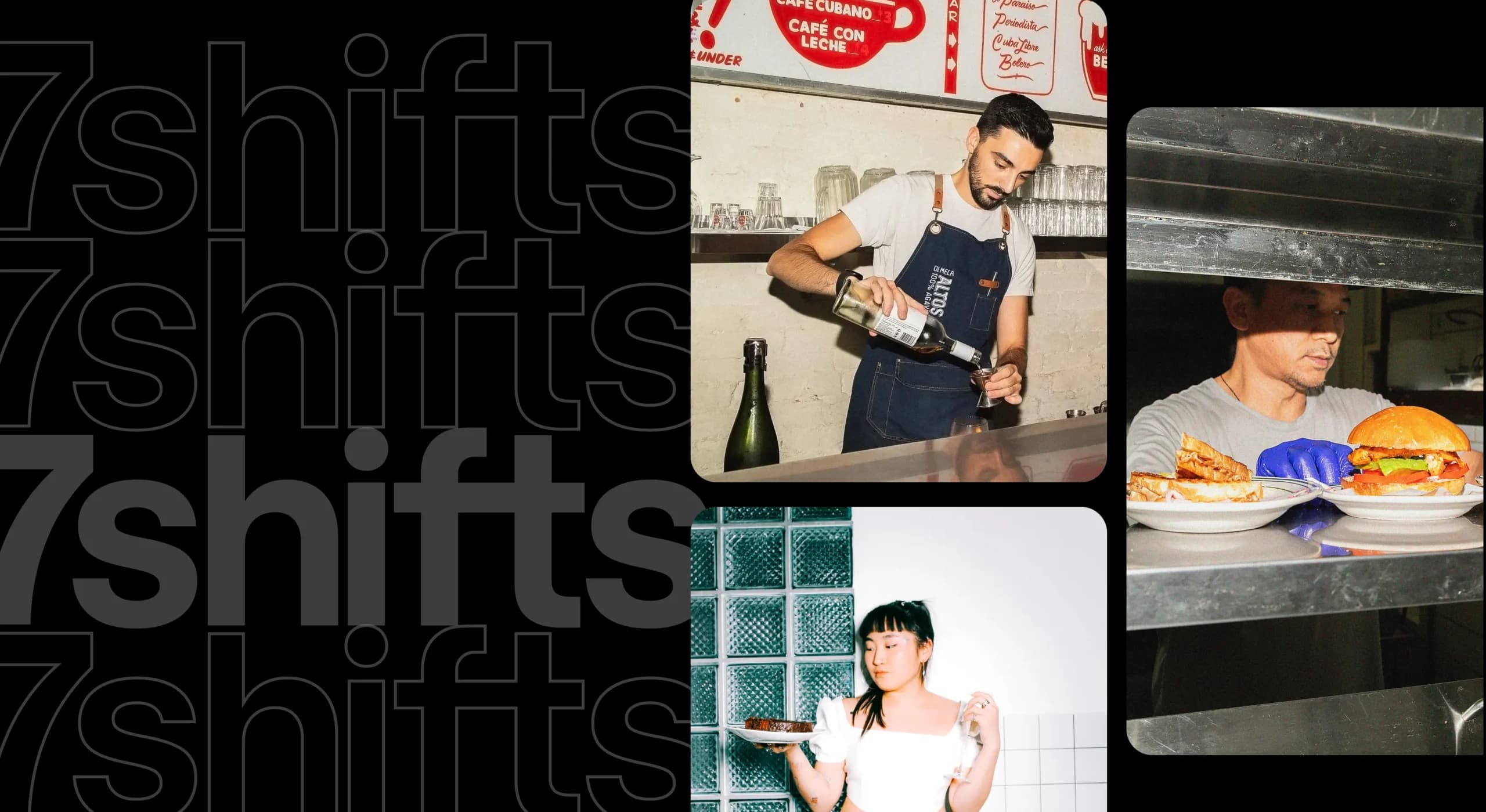If you work or have worked in the restaurant industry—as a barback, server, hostess or bartender-chances are you’ve come across some gnarly restaurant lingo and know precisely what it means (if you don’t, read on).
Jane is in the weeds. The daily special of butternut soup is 86ed. Can you pick up that table? Do you see the camper at table three?
Restaurant jargon or lingo is one vital restaurant skill anyone working in the industry needs to master. It helps staff and managers communicate important or urgent messages to each other without alarming customers and spoiling their dining experiences. And this slang unites and connects a team working hard under pressure, giving everyone a shared code that only they can understand and use.
If you are already in the industry or are looking to break into it, you need to have a firm grasp on the current restaurant slang and common terms. So, without further ado, here are 80 restaurant terms for you to revisit (and master) including general, BOH, and FOH restaurant terminology and slang.
Now, let’s dive in to some restaurant terms and definitions.
New Restaurant Toolkit
Everything you need to know before your grand opening.

FOH Lingo, Definitions, and Slang

- FOH: FOH is an acronym for Front of House, which refers to the front of the restaurant or the client facing areas like the bar or waiting area. Common FOH positions include servers, bartenders, barbacks, and hostesses.
- Server: The accepted word for waiter and waitress.
- Deuce: Table of two guests.
- Campers: Customers who remain seated at a table for long periods. Perhaps they’ve already paid for their meal, but now choose to ‘camp’ for a longer period. Or maybe they’ve entered the restaurant with the sole purpose of using the Wifi the entire day while ordering only the odd coffee. Regardless, campers can be frustrating, especially when the restaurant is full as they occupy space other guests could use.
- Pick Up: Have you ever been to a restaurant where one server starts serving you and then is replaced by another later on? Sure you have. This is a ‘pick-up’ where one server picks up another server’s table, either to help them out or because they’ve been asked to provide VIP treatment for that guest.
- Drop the check: Take the cheque to your table.
- Joiner: A customer who arrives late to a table where people are already drinking or eating.
- In the weeds: In the weeds, also known as ‘buried’ or ‘slammed’, is when servers are overwhelmed and struggling to serve their guests on time. These situations often occur when restaurants are full or understaffed, which puts extra pressure on existing staff.
- Weed wacker: The person who is sent or goes on his or her own accord to bail out someone caught in the weeds
- Sidework: The work all servers do to prepare for service and ensure everything runs without a hiccup. This includes, among other things, checking that the salt shakers are full and setting the tables
- Cross-sell: A server encourages a diner to purchase complementary items to increase the check size. For example, a server uses suggestive selling to recommend a specific type of wine with a dish, e.g., a Chardonnay with line fish.
- Upsell: A server entices a customer into buying a more expensive variation of a dish. For example, a server getting a customer to upsize their steak or increase portion size.
- Push it: A word used interchangeably with ‘sell it’ that means servers really need to sell a specific dish or drink for whatever reason—it may be that certain dishes are moving slower than usual.
- Run: Transporting food to a table, e.g., “Joe, please run this food to the table.”
- Reso: Short for reservation.
- SOS: An acronym for ‘sauce on the side’.
- Waxing a table: You’re ‘waxing a table’ when you’re giving a guest special treatment because they’re a VIP.
- Still mooing: A steak served so rare it could be alive.
- Cupcaking: Is when an employee spends lots of time flirting with a guest.
- Comp: When you ‘comp’ an item, you’re giving it free of charge or compliments on the house. Comps are reserved for special guests and VIPs.
- ETA: An acronym for ‘Estimated time of arrival’ of customers, food, and deliveries
- Well or rail brand: These are inexpensive house or bar-rail brands you can find under the bar. The bartender will serve these when a customer doesn’t specify the brand. For example, if a customer asked for a rum and coke, the bartender will simply give them the house rum.
- Call brand: These are more expensive brands found at the back of the bar that the customer asks for by name. For example, if a customer asks for Bacardi rum and Coke, Bacardi is the call brand.
- Covers: One cover is one customer. For example, if a server did a lot of covers, it was a busy shift.
- Bev nap: The small square napkin served with a beverage.
- Busser: The employee who clears dishes and cleans a table after the guests leave. They also bring them to the dish pit.
- Food runner: They’re responsible for bringing out orders to a table once the kitchen has prepared them. Depending on the size of the restaurant, the server may run the food to the table.
- Double-sat: When a host seats two tables in a server’s section at once.
- Floor: The area where guests are served.
- Run: To bring something to a table of guests.
- Two Top / Three Top: Refers to the amount of people at a table. E.g., a two-top is a table of two, a three-top is a table of three, and so on.
Recommended Reading: Restaurant Interview Questions
BOH Restaurant Lingo and Jargon

- BOH: An acronym for Back of House that refers to the non-client facing areas like the kitchen. BOH staff include chefs, dishwashers, line cooks, and even the accountant in the back office.
- 86 or ‘Eighty-sixed’: A term that means “we’re out of stock” or “stop selling this!” This phrase is often used to indicate that a menu item is no longer available, e.g., “The sea bass is 86ed,” or “The fish tastes funny, so chef is 86ing it.”
- Chits or tickets: Order receipts detailing a table’s orders for the kitchen to prepare.
- Rail: Where all incoming tickets are kept and managed. The rail is usually made of metal.
- Kill It: This means to overcook a cut of meat because the customer wants it very well done.
- Line cooks: They’re responsible for a specific station like meat or desserts. Culinary students will generally start as line cooks on route to becoming a chef.
- On the line: When you say someone is ‘on the line’ you’re merely saying that they’re a line cook.
- Sous chef: The chef who’s second in charge to the executive chef. Sous chefs are more hands-on compared to executive chefs and are very involved in preparation, plating, and other tasks involved in the daily running of the kitchen.
- Pass: The long flat surface where chefs place dishes to be picked up by servers
- Running the pass: Whoever is working the pass or overseeing it is ‘running’ it. They’re responsible for watching tickets, calling out orders, and checking plating accuracy before the food goes out to guests.
- On deck: The person running the pass is responsible for calling out the incoming orders or what’s ‘on deck’, so that line cooks can start making the dish.
- All day: The total quantity of a specific dish currently on order. For example, “There are 5 Beef Fillets, all day,” means there are presently five orders of beef fillet on the rail.
- Dead plate: A plate of food you can’t serve. Reasons for a plate of food being dead include the server forgetting about it in a busy service, meaning it’s been sitting on the pass for a long time or the food being overcooked by the kitchen.
- Dying on the pass: Food that’s been on the pass for a long time and is now cold.
- Expeditor: Also known as an ‘Expo’, this person is responsible for reading orders to the kitchen from the ticket, checking plating accuracy and ensuring food goes out on time. The Expo is the line of communication between the front and back of house.
- Mise: A French word, pronounced meez. It’s short for mise en place, which means ‘putting in place’. It simply refers to the preparation of ingredients before service. When chefs say they’re “mise-d out” for service, they’re saying they’re prepared and that all ingredients are ready.
- On the fly: A phrase which means a server needs a dish urgently and that the kitchen usually needs to drop whatever they’re doing to get it done.
- Hockey puck: If a burger is so well-done it looks burnt, then it’s often called a ‘hockey puck’.
- Nuke it: When you microwave a dish.
- Flash it: When something is undercooked and needs a little more time in the pan or oven, chefs will ‘flash it’.
- Low boy: If someone says “Hey, it’s in the low-boy,” it means it’s in the fridge under the counter.
- Behind: Kitchens are busy places with staff continually moving around. It can be dangerous as they carry knives and hot dishes. Kitchen staff will usually shout “Behind!” to let people know they’re behind them. They may even get specific and say “sharp behind” or “hot behind” to let them know they’re either carrying a knife or—yes you guessed it—something hot.
- Drop: If someone says, “The Burger is ready to drop at table 7,” it means it’s time to start cooking.
- Shoe: When you call someone a ‘shoe’ you’re saying they’re a terrible cook or chef.
- Fire: To start preparing a dish; e.g., “Fire the halibut!” The order is usually given by the head of the kitchen.
- Stretch It: If the kitchen is running out of an ingredient, stretching it means to make the most out of what’s left. Cooks might use less of the ingredient in the dish or sub other ingredients in its place.
- Walk-In: In the kitchen, the walk-in fridge keeps ingredients cold. It’s also often a place for staff to be alone and take a breather.
- Dupe: The order punched in by servers or cashiers that gets sent to the kitchen. Also called a chit or ticket. (Not to be confused with makeup or clothing dupes).
- Bump it: To remove an order from the kitchen display system after it’s been prepared.
- Heard / Heard That: Said by cooks to confirm they heard a request from another chef.
- À la minute: A French term meaning a dish or condiment that needs to be made fresh to order at that moment.
- GBD: An acronym for ‘Golden, brown, and delicious’ usually referring to fried foods.
- In the window: The warming area where chefs put orders that are ready to be served. Ever been served a dish and the server told you the plate was hot? It probably warmed in the window.
- KDS: An acronym for ‘Kitchen display system’ that shows cooks which dishes are next to prepare. It’s usually linked with the system servers use to punch in orders.
Ready to test yourself? See if you can pick out the BOH slang from this scene in The Bear.
General Restaurant Lingo

- Buddy Punch: When an employee clocks in and out for their shift.
- Business Decline (BD): This is when restaurant traffic or the customers entering the establishment slows down. These quiet times signal to management that they can start sending employees home.
- Clopen: A shift where an employee is scheduled to close the doors at the end of the day, only to return to open the next. Some states have now banned this practice because some staff now have less than eight hours between shifts. Ensure you inform yourself of the laws in your state.
- Double: When you are on back-to-back shifts. These shifts generally mean you qualify for overtime pay.
- Graveyard shift: The night or late shift, which is common in restaurants who schedule employees 24/7.
- No-Shows: Sometimes also referred to as “no-calls,” these are employees who don’t show up for work or customers who don’t arrive for a reservation.
- Shift pools: A collection or grouping of open shifts that are often available on a first-come, first-serve basis.
- Split shift: Employees agree to a split shift schedule when they work two shifts in a day, usually with a small break in between. For example, a member of staff may work from 08:30 am to 13:00 pm, have a four-hour break, and then work from 18:00 pm to 21:00 pm.
- Tip pooling: Tipped employees contribute all their tips into a pool. The pooled tips are then distributed among all employees, often based on assigned percentages.
- POS: The common abbreviation for point of sale.
- Spread of hours: The interval between the start and end of a workday is the spread of hours. For example, if a server works from 09:00 am to 13:00 pm and then again from 17:00 to 21:00pm, the total hours worked is 8 but the spread of hours is 12. When your spread of hours exceeds 10, you may be entitled to an hour’s extra pay depending on your state.
- OTS: An acronym for ‘On the side’, like when a guest wants their salad dressing on the side.
- FIFO: ‘First in, first out’, which means to stock the newest product (e.g. milk) at the back of the fridge so you use the older product first. (A restaurant task management system can send reminders to check).
- FSR: ‘Full-service restaurant’ with a seated dining experience, like a fine-dining place.
- QSR: ‘Quick-service restaurant’ that is usually counter-serve, like a fast-food restaurant or a coffee shop.
If you are interested in working in a restaurant, it is important to know everything about the industry including the different positions available, the skills needed and what to expect while working in a restaurant. Read our blog post Working in A Restaurant: Everything You Need to Know
The Bottom Line on Restaurant Lingo

Restaurant slang and terminology is such a crucial part of working in any restaurant. Not only does it improve internal communication, but it strengthens bonds. It brings employees together around a common language only they understand. It creates strong connections that last for years to come.
So, anyone currently in the restaurant industry or wanting to break into it needs to understand the most common restaurant slang to achieve these benefits. Simply bookmark it and return back to it, time and time again when you need a refresher.

Nick Darlington, Author
Nick Darlington
Author
Nick Darlington (www.nickdarlington.com) is a B2B writer who conceives, writes and produces engaging website copy, blog posts and lead magnets for technology companies.
